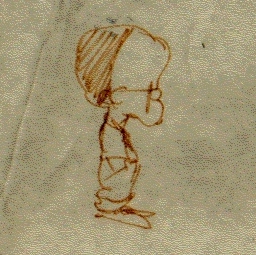- Blog/
Buffy: Not Just for Boys
It’s not easy spreading the Word of Buffy. I tell people that my favorite TV show is Buffy the Vampire Slayerbecause of the excellent writing (the creator, Joss Whedon, also wrote Toy Story), but women in particular tend to give me a knowing look as if I’d just said I read Playboy for the articles.
Sometimes my outreach is rewarded. What was almost a secret society of Buffy fans has been growing, and over the years I’ve had Tuesday-night Buffy dinners with coworkers, worked for a project manager who watched Buffy with his family (if you asked his young daughter what’s the best show on TV, she’d yell “Buffy!”), met Buffy admirers on business trips, and recently my sister became a Buffy addict during the series’ final season. And she used to be one of the skeptics.
Buffy the Vampire Slayer — Season One is relatively short, only twelve episodes, and it lacks the strong story arc of the later seasons. But each episode, peppered with with witty dialogue and pop-culture Whedonisms (“I can’t believe you of all people are trying to Scully me”), invests in the development of the ensemble cast and plays authentic teenage themes, sometimes comically, sometimes movingly, against the bizarre backdrop of high-schoolers battling the forces of evil.
Buffy’s struggle with the unfairness of her destiny is a constant theme. The two-part pilot (Welcome to the Hellmouth and The Harvest) opens with Buffy’s arrival in the Southern California town of Sunnydale, eager to start with the “clean slate” that Principal Flutie of Sunnydale High offers Buffy after her expulsion from her previous high school (for burning down the gymnasium, the result of her climactic battle with vampires there — it was a thing, as Joss Whedon would say).
Buffy’s optimism is short-lived, as she discovers the school librarian, a stuffy Brit named Rupert Giles (played by Anthony Stuart Head, once upon a time the romantic interest in the coffee commercial), is her new Watcher, assigned by the Watchers Council in England to train and guide her, and he informs Buffy that Sunnydale sits atop the Hellmouth, a hotbed of mystical evil complete with an imprisoned uber-vampire called The Master. But she valiantly attempts to live a normal high school life, dating (Never Kill a Boy on the First Date), cheerleading (Witch), and going to the spring dance (Prophecy Girl).
Buffy does have some assistance besides Giles — her “Scooby gang” of friends who inadvertantly learn of her dual life (“Is there anyone in this town who doesn’t know I’m the slayer?”) and a mysterious tall-dark-and-handsome named Angel. The Scooby members, initially wise-cracking but socially unaccomplished Xander, and meek and mousy Willow, keep Buffy grounded in everyday high-school life but they have their own issues, too. Xander is exposed to the perils of sex peer-pressure and student-teacher romance in Teacher’s Pet and exposes teen-testosterone cruelty and the barbarity of dodgeball in The Pack. Willow shows off her geek skills and experiences her bad turn at romance, the on-line variety, in I Robot…You Jane. The club gains a few unlikely members over the season. Cordelia, the shallow Queen of Mean, disdains the Scoobies as social lepers but is rescued by them more than once. Ms. Calendar, the computer science teacher, turns out to be a “techno-pagan” who scans for the occult over the Internet.
Although Xander is Whedon’s proxy character (we could have guessed even if Whedon didn’t tell us in the commentary), and Giles and Angel play fatherly and romantic-interest roles, respectively, it is the female characters that display the most complexity. While all the actors fill their roles capably, Alyson Hannigan (a quite different nerd in American Pie) is the strongest performer, playing cute, smart and vulnerable — evoking a tug of the heart with a mere look every time her long-time pal Xander unknowingly knowingly injures her. Kristine Sutherland convincingly portrays Buffy’s mother Joyce Summers, trying to start anew as a divorcee and single parent of a teenage daughter who always seems to get in trouble. Her relationship with Buffy is rich with caring and irony (“If you don’t go out it’s the end of the world” she says tiredly to Buffy without realizing the literal truth of her words). Even Cordelia, played by the gorgeous Charisma Carpenter (interestingly, she originally auditioned for Buffy while Sarah Michelle Gellar was cast as Cordelia — can you imagine the reverse casting?), reveals there is depth beneath her shallowness, but her shallowness is delightful (she’s embarrassed that her mother is diagnosed with a disorder so unfashionable as Epstein-Barr).
You miss any Buffy episode at your own risk — chances are, there will be some reference to it later, and supporting characters often come back to play major roles. If there’s one episode in Season One that’s dispensable, it’s Nightmares, which shows the teen’s various insecurities come to life, ranging from the shallow (Cordelia’s bad hair day), to the serious (Buffy’s feelings about her parents’ divorce). Some episodes are not critical to following the Buffy epic but are among my favorite just because of the humor and clever premises: The Puppet Show guest stars a horny old ventriloquist dummy and introduces Arman Shimerman (of Star Trek Ferengi fame) as the enjoyably weasely new principal who drafts the Scooby gang into the school talentless competition. Out of Sight, Out of Mind answers the zen question if no one notices you in class, do you really exist?
One thing that doesn’t quite ring true (once you get around the demon thing) is the ethnic blandness of Sunnydale, on par with Friends, Seinfeld and Woody Allen movies, not to mention the WB teen shows that have followed. But this is slightly mitigated in later seasons, and the show is still a far cry from 90210.
The DVD menu organization leaves something to be desired. The main menu on each disc shows the titles of four episodes arranged as a rectangle, so the desired viewing order is not clear (it’s left to right, top to bottom). The special features should be accessible from the main menu but instead are listed in each episode’s submenus. This causes a few annoying problems — the “Interview with Joss Whedon” that is listed in more than one episode is just the one interview, while the commentaries, although distinct, once selected “stick” so that proceeding on to another episode that has a commentary will automatically play that commentary, and there is no obvious way to turn it off. So I recommend watching the series all the way through before trying the extras.

